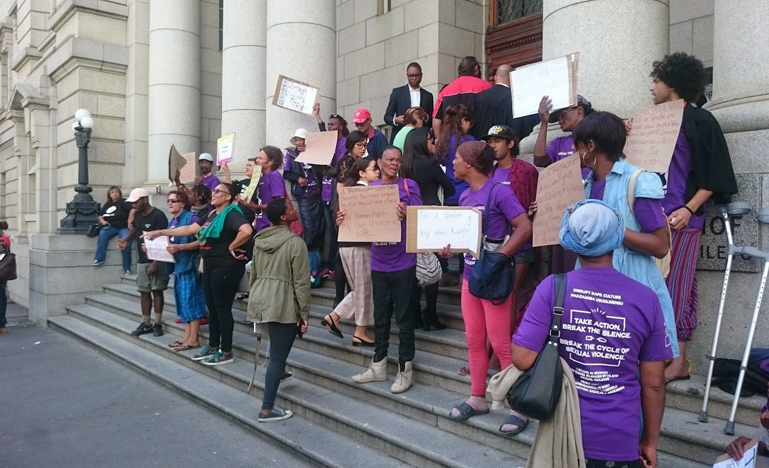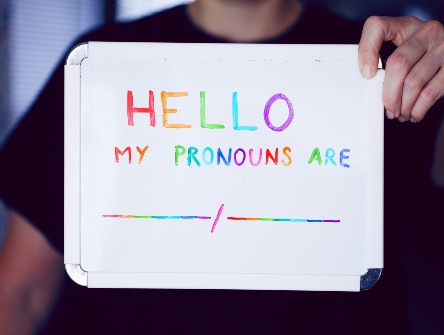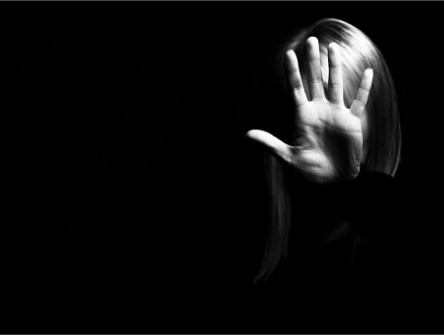Fighting for the rights of gender minorities
The Jade September case in South Africa illustrates why gender equality advocates must do more to defend the rights of gender minorities.

People with diverse gender identities and expressions continue to face unacceptable levels of violence and discrimination in Canada and around the world. It is crucial that professionals in international development understand and acknowledge the root causes of this and how they are connected to patterns of inequality and prejudice against cisgender women and girls. More than that, gender equality advocates must do more to defend the rights of gender minorities.
Indeed, these rights are threatened when institutional control over gender norms impacts the ability to express one’s gender freely. This is the situation in which Jade September found herself as an incarcerated transgender woman in a men’s prison facility in South Africa. Jade became a survival sex worker after leaving home at age 15 because her family didn't accept her femininity. Eventually a dispute with a client over refusing payment resulted in a fight that caused his death. Jade confessed to killing him to the police and was convicted in 2013 on a 15-year sentence for murder..
Jade was placed in a male facility because she, like many other transgender people living in South Africa, had not had an opportunity to amend the sex designation on her legal ID, and because prisons administer inmates based on the designation written on that person’s ID rather than their lived identity. In Canada, similar policies were reviewed by Correctional Service Canada only last year and amended to accommodate trans inmates according to their gender identity.
But even though she was not housed in a women’s prison, Jade had, for the first few years of her sentence, no major problems expressing her gender identity as a woman, in the little ways afforded to her as an inmate. This included wearing small amounts of makeup, feminine under-garments, long hair, and being called in the feminine pronoun by prison staff and other inmates.
All that changed the day her things were taken from her, along with the staff’s respect for her preferred pronouns and name. For her defiance of gender norms in prison, she was harassed by staff and placed in solitary confinement – though the prison denied this. Jade sued the responsible government departments for discriminating against her on the basis of gender identity and expression, seeking to have her things given back to her, with an apology, and for staff to call her by her name and by feminine pronouns, among other systemic remedies.
Jade is a client of Lawyers for Human Rights (LHR)’s Gender Equality Programme. LHR’s work focused on establishing that the very quality of gender non-conformity – as an individual’s self-expression – needs to be protected and accommodated as a minority right in a binary world. The case, heard in November of 2018 (with judgment still reserved), was the first of its kind in South Africa. The Equality Court had to consider for the first time whether South Africa’s national anti-discrimination legislation – know as the Equality Act, – prohibits discrimination against trans people under government care, in this case prisoners.
But the case is also a reminder of the link between gender inequality and the freedom to express one’s gender without reprisal – indeed, this is why it fell under the mandate of LHR’s Gender Equality Programme.
The prison justified its actions on the grounds that allowing Jade to express herself as a woman would be a threat to her own safety in a men’s prison. Never mind that the rationale, as LHR countered, would be entirely ineffective for a transfeminine and gender non-conforming person like Jade, regardless of the clothes she wears. It fails to grasp the embedded prejudices against femininity that are common in prisons. By denying free gender expression, institutional cultures can inadvertently create environments that condone anti-feminine conduct, instead of seeking ways to change the culture which leads to gender-based violence.
The lesson is there will be no gender equality if people who defy majority gender norms are forced to hide to survive. Indeed, that is endemic to ensuring femininity remains limited to certain forms and spaces. The connection with inequality and prejudice against cisgender women and girls is undeniable. Research tells us that violence and discrimination against gender non-conforming people are rooted at least in part in anti-feminine power dynamics. United Nations human rights Independent Expert on sexual orientation and gender identity has echoed this, calling it a form of gender-based violence.
Yet the existence of gender diverse people is too often forgotten or silenced in dialogues about gender equality. For instance, in the wake of the #MeToo movement, despite being the most vulnerable to gender-based violence, --binary and transfeminine experiences were seldom represented. It is no wonder, as policy on gender equality is routinely framed in terms of two narrowly-defined populations: women and men. This excludes the related but distinct needs of individuals who do not readily fit in either of those categories and/or those that are excluded from the category that they identify with.
Feminist international development approaches to gender equality advocacy – such as Canada’s feminist international development policy and Gender-Based Analysis Plus (GBA+) to analyze the gendered implications of government policy – must remember to factor in the needs of women and girls of transgender experience, as well as all those who defy social norms with respect to gender and sexuality. These programs have a key role to play in promoting law reform and addressing issues of inequalities, discrimination, and violence against gender and sexual minorities.
What’s more, international development must prioritize capacity building and education to prevent, investigate, and punish violence and discrimination on the basis of gender identity. Existing mechanisms can also improve what we know of the prevalence of inequalities against people who are gender non-conforming, transgender, lesbian, bisexual, and gay, by using disaggregated data.
Gender equality advocates like LHR are not only supporting but fighting for the rights of gender minorities. Other organizations should do the same, if international development efforts are to be truly successful in eradicating gender inequality. The buck cannot start and stop in prison.


